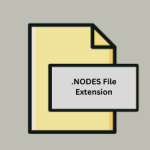.FLS File Extension

Flash Lite Sound Bundle
| Developer | Adobe Systems |
| Popularity | |
| Category | Audio Files |
| Format | .FLS |
| Cross Platform | Update Soon |
What is an FLS file?
.FLS file extension is associated with Flash Lite Sound Bundles, a format used primarily for packaging audio content within the Adobe Flash Lite environment.
Adobe Flash Lite was a lightweight version of Adobe Flash Player, designed specifically for mobile devices and embedded systems. Flash Lite enabled rich multimedia experiences on devices with limited processing power and memory.
More Information.
Adobe Flash Lite was first released in 2003. It provided a subset of the features available in the full Flash Player, tailored for mobile devices with constrained resources.
The .FLS format was developed to address the specific need for handling audio content efficiently within this environment.
By bundling multiple audio files into a single package, .FLS files simplified the distribution and management of sound resources for Flash Lite applications.
The initial purpose of .FLS files was to streamline the inclusion of sound effects, background music, and other audio elements in Flash Lite applications.
This format allowed developers to bundle various sound files into one package, reducing the overhead associated with managing multiple individual audio files.
This approach also helped in optimizing the performance and memory usage on devices with limited capabilities.
Origin Of This File.
.FLS files were introduced as part of the Adobe Flash Lite framework, which aimed to bring Flash content to mobile phones and other portable devices.
The introduction of Flash Lite was driven by the increasing demand for multimedia capabilities on mobile devices in the early 2000s.
As mobile phones began to support more complex applications and media, the need for a standardized way to manage and distribute audio content became apparent, leading to the creation of the .FLS file format.
File Structure Technical Specification.
An .FLS file is essentially a container that holds multiple audio files, usually in formats like MP3 or WAV. The structure of an .FLS file typically includes:
- Header: Contains metadata about the bundle, such as the number of audio files included, the format of these files, and other relevant information.
- Audio Data: The actual sound files are stored sequentially within the container. Each audio file is usually compressed to reduce the overall size of the bundle.
- Index/Table of Contents: An index that provides quick access to the individual audio files within the bundle. This index includes pointers to the start and end of each file, facilitating efficient extraction and playback.
The technical specifications of .FLS files are designed to ensure compatibility with the Flash Lite runtime, allowing for seamless integration and playback within Flash Lite applications.
How to Convert the File?
Converting .FLS files to other audio formats involve extracting the individual audio files from the bundle and then converting them to the desired format. Here’s a general approach to achieve this:
- Extraction: Use a specialized tool or script to extract the audio files from the .FLS bundle. This may require understanding the .FLS file structure and accessing the index to locate and extract each audio file.
- Conversion: Once the audio files are extracted, they can be converted to other formats (such as MP3, WAV, or AAC) using standard audio conversion tools like Audacity, VLC Media Player, or dedicated conversion software.
Advantages And Disadvantages.
Advantages
- Efficiency: Bundling multiple audio files into a single .FLS file reduces the overhead of managing separate files, which is particularly beneficial for mobile devices with limited storage and processing power.
- Optimization: Compression of audio files within the .FLS bundle helps in reducing the overall size, leading to faster download times and lower storage requirements.
- Simplified Distribution: Developers can distribute a single .FLS file containing all necessary audio resources, simplifying the deployment process and ensuring that all sound files are available as intended.
- Consistency: Ensures that all audio files are packaged together, reducing the risk of missing or corrupted files during transfer or installation.
Disadvantages
- Limited Flexibility: Once an .FLS file is created, modifying the content (such as adding or removing individual audio files) can be cumbersome and often requires recreating the entire bundle.
- Compatibility: .FLS files are specifically designed for Flash Lite, limiting their use outside of this environment. With the decline of Flash and Flash Lite, the relevance and compatibility of .FLS files have diminished.
- Complexity in Extraction: Extracting individual audio files from an .FLS bundle can be more complex compared to dealing with standard audio formats directly.
How to Open FLS?
Open In Windows
- Adobe Flash Lite Emulator: Install an emulator that supports Flash Lite applications and use it to open and run the .FLS file.
- Conversion Tools: Use extraction and conversion tools to unpack the .FLS file and access the individual audio files.
Open In Linux
- Command-Line Tools: Linux users can leverage command-line tools and scripts to extract and convert .FLS files. Open-source tools and community-developed scripts are often available for these purposes.
- Wine: Run Windows-based Flash Lite emulators or extraction tools using Wine, a compatibility layer for running Windows applications on Linux.
Open In MAC
- Adobe Flash Lite Emulator: Similar to Windows, using an emulator that supports Flash Lite can enable opening .FLS files.
- Audio Tools: Utilize tools like Audacity or specialized scripts to extract and convert the audio content from .FLS files.













